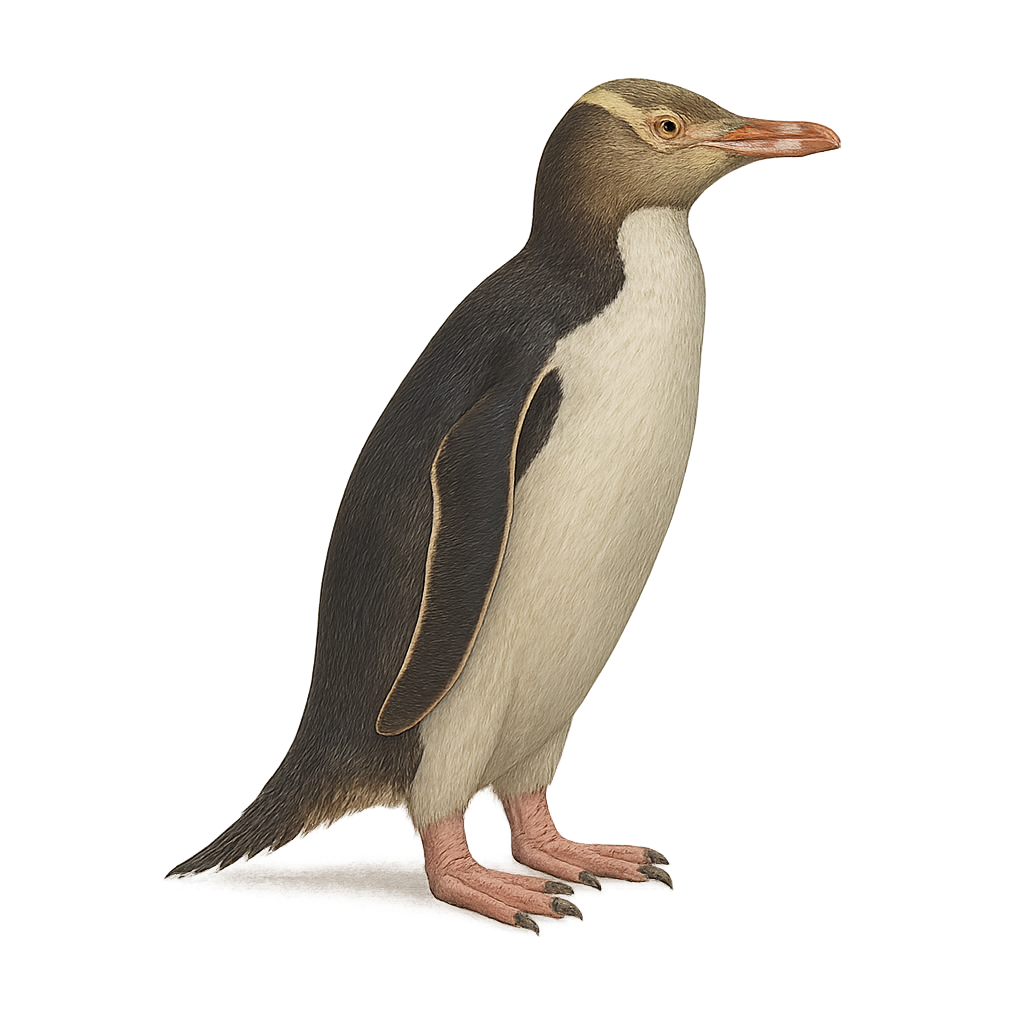Your wildlife photography guide.
Explore the yellow-eyed penguin in detail, study its behavior, prepare your shots.
Where to observe and photograph the yellow-eyed penguin in the wild
Learn where and when to spot the yellow-eyed penguin in the wild, how to identify the species based on distinctive features, and what natural environments it inhabits. The WildlifePhotographer app offers tailored photography tips that reflect the yellow-eyed penguin’s behavior, helping you capture better wildlife images. Explore the full species profile for key information including description, habitat, active periods, and approach techniques.
Yellow-eyed penguin
Scientific name: Megadyptes antipodes

IUCN Status: Critically Endangered
Family: SPHENISCIDAE
Group: Birds
Sensitivity to human approach: Suspicious
Minimum approach distance: 10 m
Courtship display: September to November
Incubation: 39-51 jours
Hatchings: October to December
Habitat:
Rocky coasts, coastal forests
Activity period :
Primarily active during the day, with peak activity in the morning and late afternoon.
Identification and description:
The yellow-eyed penguin, native to New Zealand, is easily identified by its striking yellow eyes and the yellow band of feathers around its head. This medium-sized penguin stands about 65 to 70 cm tall and weighs between 5 and 8 kg. It inhabits rocky shores and coastal forests, feeding primarily on fish and squid. Sadly, it is critically endangered due to habitat loss, predation by introduced species, and human disturbance. Conservation efforts are vital for its long-term survival.
Recommended lens:
400 mm – adjust based on distance, desired framing (portrait or habitat), and approach conditions.
Photography tips:
To photograph the yellow-eyed penguin, it's crucial to use a telephoto lens of at least 400mm to capture detailed images from a distance without disturbing the animal. Opt for morning or afternoon hours when the light is soft and flattering. Be discreet and patient, maintaining a safe distance of at least 10 m. Use a tripod to stabilize your camera for sharp images. Remember to respect the natural environment of these birds by avoiding littering or disturbing their habitat.
The WildlifePhotographer App is coming soon!
Be the first to explore the best nature spots, track rutting seasons, log your observations, and observe more wildlife.
Already 1 441 wildlife lovers subscribed worldwide

